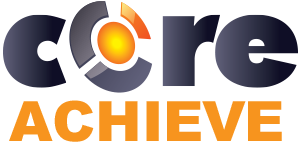Benefits and Tips for Implementing Videos in LMS Courses
March, 31 2023
Other posts:
Enhancing Team Dynamics for Effective Group Decision-Making with LMS Integration
Organizations increasingly rely on collaborative efforts to solve complex problems, innovate, and adapt to change, but how do we ensure that collaboration is happening.
Maximizing Small Business Potential with Training Technology
Training technologies can push small businesses ahead of their competitors, but what are the factors that go into choosing the right technology?
Unlocking Employee Potential: The Transformative Benefits of an Interactive Learning Management System (LMS)
Interactive training allows for unlocking employee potential, but how is it done?
Building a Robust Sales Pipeline with Training
Every organization wants a streamlined sales pipeline, but building one requires a series of interlocking activities with one of the most important being training.
Strategies for Adapting In-Person Training to Online Platforms
Online training is one of the most flexible ways of delivering training across organizations, but how do you even begin to adapt in-person training into online?
95% of viewers retain a videos message, whereas only about 10% of readers retain a message in text. Videos are a powerful tool for creating rememberable content, so videos should be utilized in eLearning, but how?
Utilizing videos in your Learning Management System (LMS) can be an easy and effective way to increase your engagement for your eLearning program while reaping other benefits. However, these tips should be followed to ensure that those videos don’t detract from the course.
Benefits of Using Videos in eLearning
Improved Engagement
As mentioned above, videos can be more engaging than text-based materials, especially with younger learners now. Much of the content consumed online is in video format, meaning that most learners will be comfortable, if not prefer, videos.
Easier Retainment
The messages and information presented in a video are easier for learners to retain—making videos optimal for learning. About 95% of viewers retain a video’s message compared to 10% in text.
More Accessible
Videos are also very accessible on the go and from mobile devices, making it easier for learners to access that content no matter where they are. On top of this, videos can also be played solely for the audio, turning into more of a podcast, which gives more options.
Very Flexible
The content of a video can represent pretty much any topic—making it a very adaptable format. Whether it be safety, laws and regulations, interviews, demonstrations, onboarding, or case studies. They are also very effective at storytelling, making them even more potentially impactful.
Controllable Personalization
Learners can interact with videos at their pace by using playback options like pausing, rewinding, looping, or slowing down the speed. This allows learners to pull apart the video as much as they need to in an intuitive way where pulling apart text can be obtuse.
Time Saving
While videos can take a little bit to produce, they can present a lot of information quickly and—as shown above—much more efficiently.
The Best Practices for Video Implementation
Keep it Short
Videos can contain a lot of information and anything for too long will naturally lose some viewers’ interest. Learning content should be kept under 10 minutes, but that is the absolute maximum.
Be Clear
This is referenced in the point above; the videos should be clear with the points. It can be easy to include too much extra information in a video so make sure not to obfuscate the video’s meaning.
(Of Course) Use Visuals
Videos are partly a visual format, so use visuals to benefit the impact of the message. Graphics like text or illustrations will serve to strengthen the point in the learner’s mind—especially when they are used to highlight key moments.
Ensure Quality
Always strive for the highest quality of content possible. Use a good camera, good microphone, or have good mixing and animation. Low quality elements of a video are distracting and, even if the content is amazing, it will be overshadowed by the poor quality.
Make the Content Interactive
Naturally, include the other interactive elements of the LMS into the content of the video. Have quizzes or assignment adjacent (or during) the video.
Videos Are the New Standard
Videos have become the new standard for content online. While there are many technical reasons for this like faster internet standards, the biggest reason is that videos are the fastest way to engage people. The brain can process information much faster in video format than it with text, making it optimal for efficient learning content.
Get started with CoreAchieve for free.
Photo by Jakob Owens on Unsplash

Leave comment: